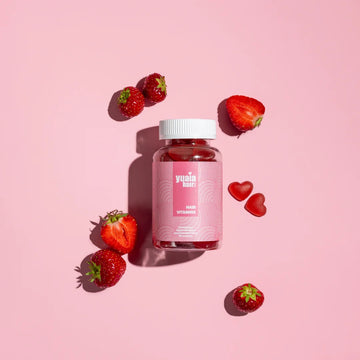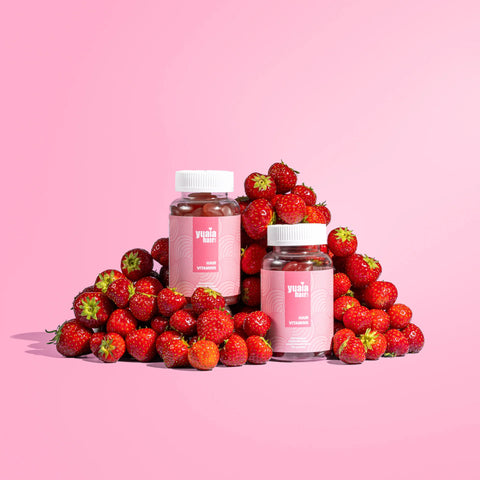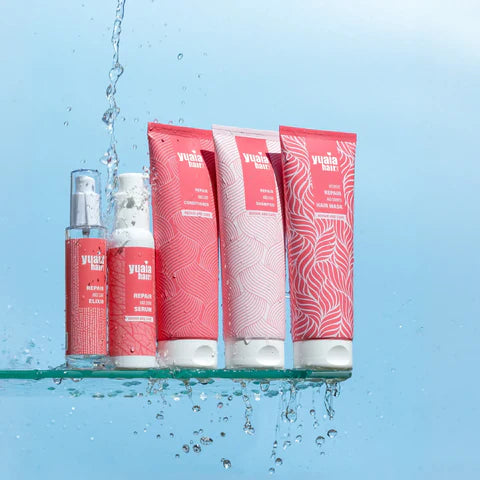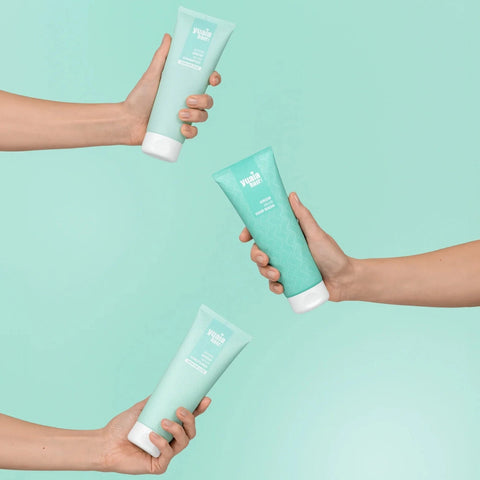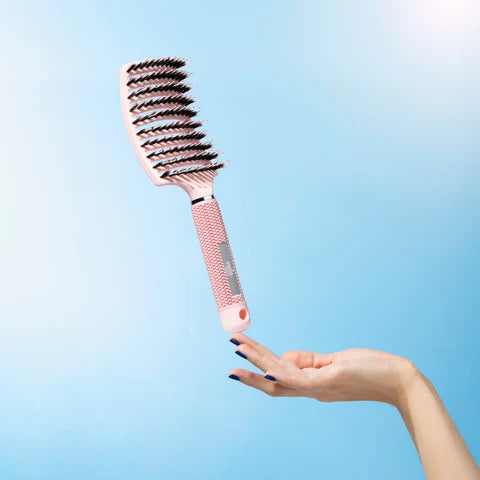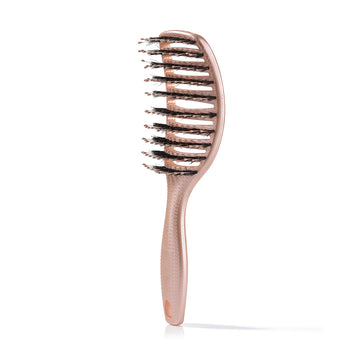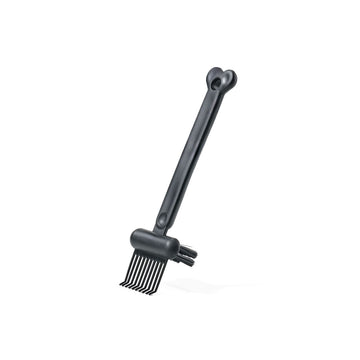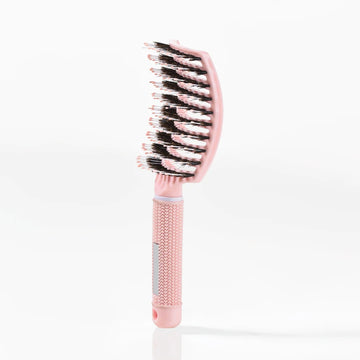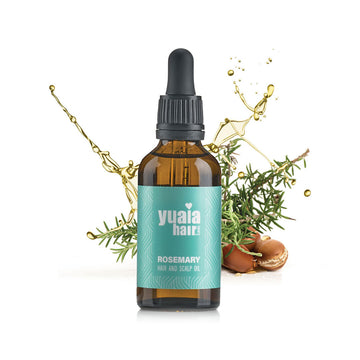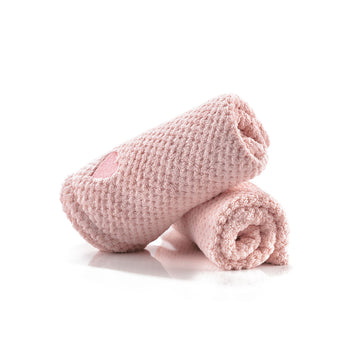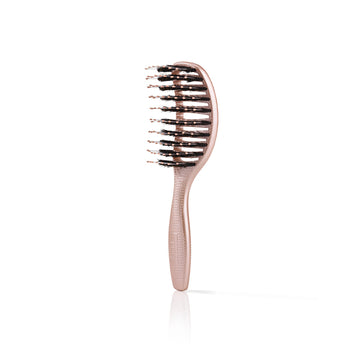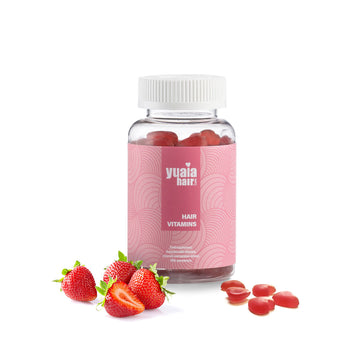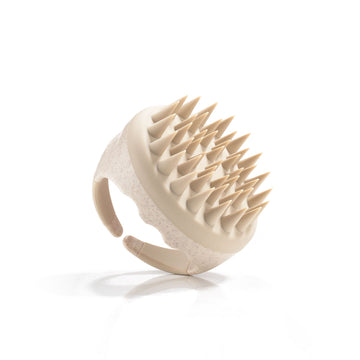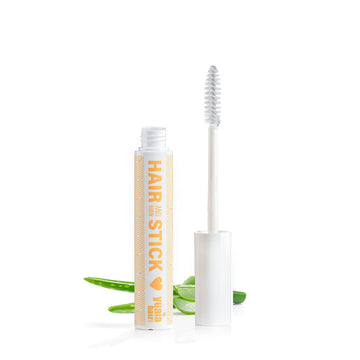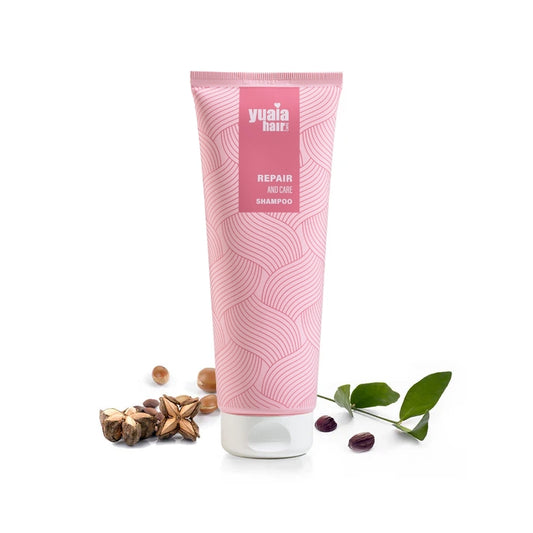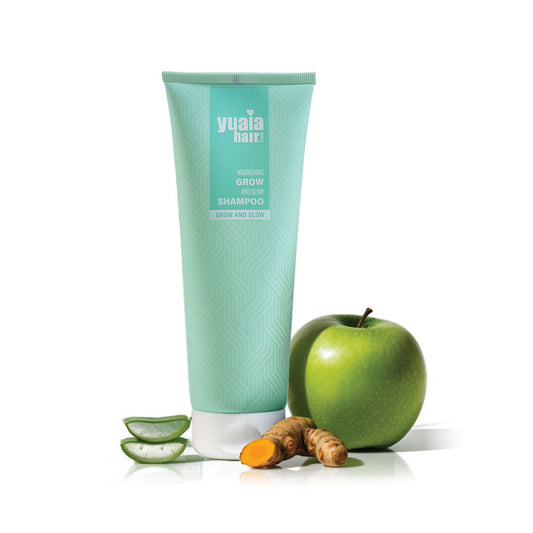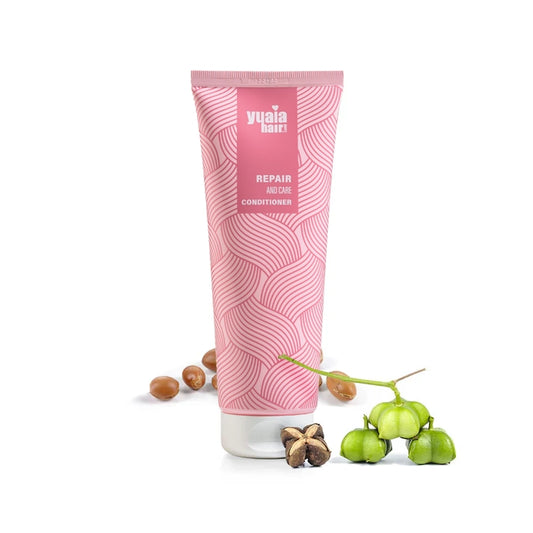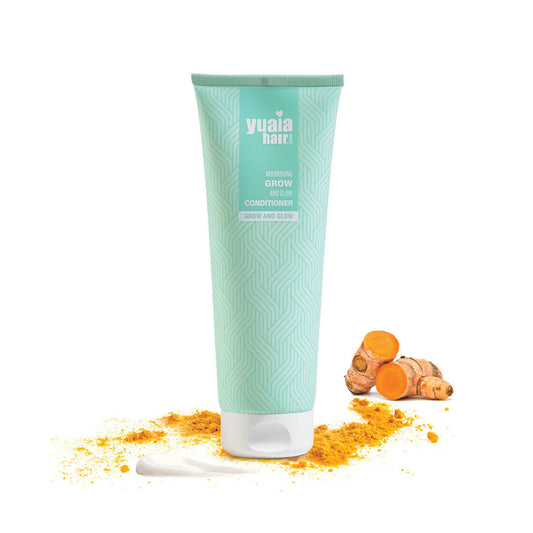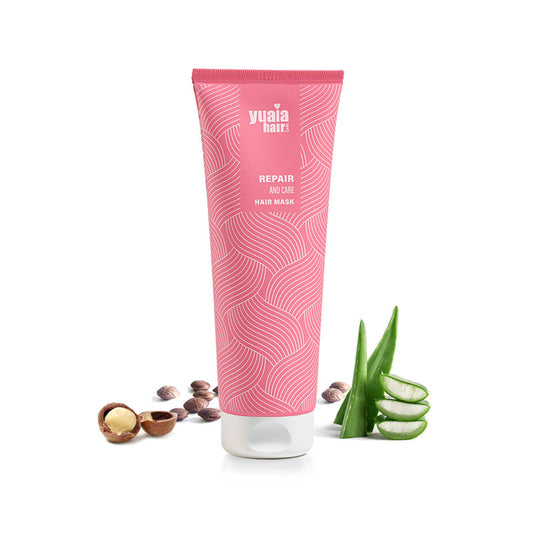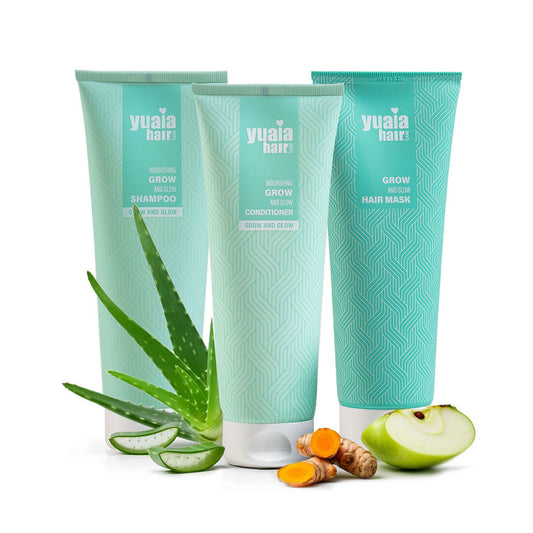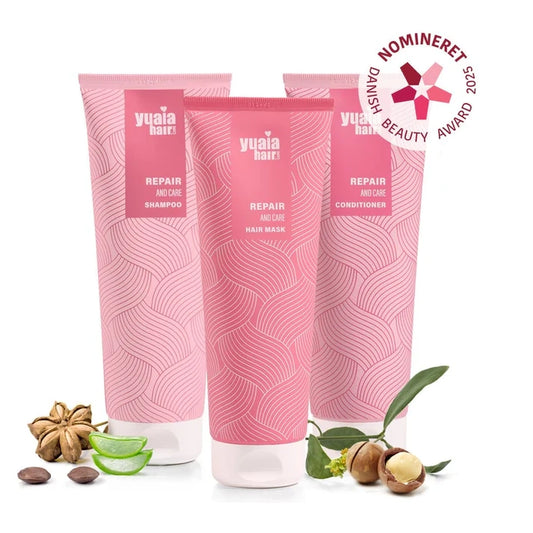Silicone-free shampoos have become increasingly popular in recent years, and for good reason. Silicone is a group of chemicals often found in hair care products, including shampoos, conditioners and styling products. They are often used to give the hair a shiny and soft texture, but they can also have some negative effects on the health and length of the hair. Often it can do more harm than good and therefore it is important to know which ingredients are in your shampoo.
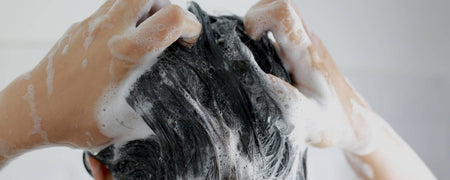
Shampoo without silicone - Great guide to silicone-free shampoo and conditioner

by Nanna Bundgaard | 08. February 2023 | Reading time: 14 minutes
Read more about the authorWhy is there silicone in shampoo?
Silicone in shampoo is a synthetic polymer compound that usually exists in the form of a liquid or wax. It is made from silica (sand) which has been treated and combined with oxygen and other elements. Silicone can be used to give the hair suppleness, softness and shine. It works by forming an invisible "film" over each individual hair strand that prevents moisture loss, reduces friction between hair strands and adds volume.
Silicone is often used as emollients, conditioners and humectants in shampoos and other personal care products. They help to improve the appearance of the hair by increasing its shine and at the same time protect it from damage caused by heat styling tools and harsh chemical treatments. In addition, they also act as water-repellent sunscreens by preventing UV rays from penetrating deep into the scalp.
Silicone-based ingredients are widely used in many shampoos. Despite their benefits for hair health, silicones can cause build-up on the scalp due to their water-repellent properties. This can lead to a number of problems for both the hair and the scalp. We give you a guide right here on why you should choose a silicone-free shampoo.
Try our hair test
The hair test gives you precise answers about which products are best for your hair type. Try it now 👇🏼
Try it now!Therefore, you must choose a shampoo without silicone
Silicone is widely used in beauty products, especially shampoos and conditioners. Its popular properties can give hair a shiny and smooth appearance, but unfortunately it also has a downside. Silicones can also be harmful to the hair in the long run. Silicones coat the hair and prevent moisture from entering or leaving the hair, trapping dirt and products in the hair strands. Over time, this coating of silicone can weigh hair down and make it look dull, limp and greasy. In addition, silicones can make it difficult for conditioning treatments to penetrate deep into the scalp or hair follicles, as they block some of the beneficial ingredients. This can obviously have a harmful effect on your hair.
You will be able to experience these things if you use a shampoo with silicone:
Dry hair - The silicone helps to form a membrane around the hair strand which initially helps to retain moisture and care. But the silicone also makes it difficult to add new moisture and care to the hair. Thus, over a longer period of time, if you do not clean your hair well, you may experience that your hair becomes dry and more fragile. This will then mean that your hair will have a greater tendency to break.
Oily hair and scalp- When the hair becomes dry, the scalp tries to compensate by producing more of the hair's natural oils. It will thus cause the hair and scalp to become greasy. If you then think that you should just wash it, then you risk worsening the situation if you continue to use a shampoo with silicone.
For these reasons, many people now choose silicone-free shampoos as part of their hair care routine. Silicone-free shampoos often contain nourishing and natural ingredients that help keep hair healthy, cared for and moisturized without weighing it down. These natural ingredients such as aloe vera, coconut oil and shea butter are full of vitamins and minerals that are important for maintaining normal hair growth. The natural ingredients will help to moisturize your scalp and at the same time prevent dryness and damage to the hair strands which can be caused by environmental factors such as sun or wind.
People with curly or frizzy hair should especially avoid shampoos with silicone, as these hair types need more moisture and care than other hair types. If you use a shampoo with silicone, it will only dry out the hair strands further, which will eventually lead to breakage in the hair structure. People with fine or thin hair should also consider avoiding this type of shampoo - silicone build-up on thin, delicate strands can lead to further thinning, which is the exact opposite of what you want when trying to achieve voluminous locks!
In addition to nourishing the scalp and hair follicles, it is good to use a silicone-free shampoo for those who often use styling products such as gels or mousses on their hair. As previously mentioned, silicones create an invisible barrier on top of your hair strands which prevents the styling products from penetrating the scalp, meaning you have to use more product than necessary to achieve the desired results!
Ultimately, opt for a silicone-free shampoo, as you'll experience healthier hair that's moisturized and free of any build-up that can cause them to look limp or greasy over time! With all this in mind, look out for shampoos labeled "sulfate free" next time you go shopping - sulfates are often used in conjunction with silicones, so avoiding both will ensure healthier hair!

Which silicone substances are bad for my hair?
Although they can provide a number of benefits, there is some debate about the long-term effects of silicones on hair health. The type of silicone used can determine if it is safe to use in your hair or if it can cause damage.
The two main types of silicones commonly used in hair care products are water-soluble and non-water-soluble (fat) silicones. Water-soluble silicones are generally considered to be safer than their fat-soluble counterparts, as the water-soluble ones dissolve easily when exposed to water. Examples of this include:
Water-soluble silicones
- Dimethicone copolyol
- PEG-modified dimethicone.
- Dimethicone PEG-8 Succinate
- Lauryl Methicone Copolyol
- Amodimethicone (Trideceth-12, Cetrimonium Chloride)
Non-water soluble silicones or fat soluble silicones are not easily washed away with water and tend to build up on the scalp and hair shaft over time. Examples of this are:
Fat-soluble silicones
- Cyclopentasiloxane
- Dimethicone
- Amodimethicone
- Phenyltrimethicone.
Water-soluble silicones have less risk of build-up as they are easily washed away with water and do not require strong surfactants or detergents to be cleaned out. This makes them an ideal choice for those who want to keep their hair healthy while enjoying the benefits that silicones can offer. On the other hand, non-water soluble silicones can potentially create build-up on the scalp after repeated use, leading to dandruff, irritation, greasy hair and scalp or dryness, weighing the hair down making it limp or lifeless, and reducing its ability to absorb natural moisture and nutrients from other treatments such as serums or oils. Non-water-soluble silicones should therefore be used sparingly due to their potential negative long-term effects on the scalp and hair shafts when used regularly for extended periods.
Hairdresser's advice
Lasse Søby is Denmark's leader in curls - Certified in Curl by Curl Cut™️ with training from Lorraine Massey herself in New York. In addition, he also works with other curl cutting techniques in dry hair and is an expert in colour treatments. See his instagram here.

Why should you avoid silicone in your shampoo?
- Silicone creates a lamination on the hair that becomes denser and denser over time, resulting in a "suffocating" effect on the hair shaft. Initially, silicones work in a way that makes the hair nice, soft, shiny and healthy-looking - but it's a false surface and eventually results in the inability to penetrate and moisturise the hair anymore, just like wearing a raincoat in the rain - the rain doesn't get through either.
Which hair types should avoid silicone in particular?
- All hair types should avoid silicones.
Are there any areas of my hair care regime where silicone can be a good idea?
- No, silicone is never good and can only make a quick fix that ultimately "kills" the hair.
What should I do if my shampoo contains silicone?
To start with, make sure your hair and scalp are clean. The simple advice is of course to use a silicone-free shampoo which can help to clean the hair of the remaining silicone. You can advantageously use a scalp brush to clean the scalp as well. It is super comfortable to use and really gives your scalp a helping hand! The shampoo you should use depends a lot on whether you are already experiencing problems with your scalp or hair. Depending on whether you need a gentle shampoo or whether it should be a shampoo for dry hair, e.g.

How do I find a good silicone-free shampoo?
By now you have heard quite a bit about why you should choose a silicone-free shampoo. But now you're probably left with: "Well, which one should I choose?" that's a really good question, a lot depends on your hair type.
We can recommend our Repair and Care shampoo to you who have dry, damaged or curly hair. The shampoo is sulfate and silicone free and gives your hair plenty of care, moisture and shine! It really is a wow experience, trust me. In addition, the shampoo also contains an ingredient that helps reduce damage by up to 80%. It is highly recommended if you have dry and frizzy hair that really needs a lot of moisture and care.
For those of you with fine, thin or generally Scandinavian hair who want more fullness and volume, I can highly recommend our grow and glow shampoo . Of course free of silicone and sulfate, with its unique ingredients it has been proven to reduce hair loss by up to 89%, increase hair density by up to 52% and increase the diameter of the hair by 11.3% after 150 days of use. So it is a really worth a recommendation for you!
If you want to read more about the ingredient Capilia Longa and its results, read here .
Should I use a conditioner without silicone and sulphate?
The clear answer here is, YES! For exactly the same reasons as with shampoo. You must always be careful of harmful silicone substances that can accumulate in the hair and scalp and develop into problems over time. The same actually applies to styling products, choose some products that have natural ingredients or oils instead.
Guide: How to use a silicone-free shampoo and conditioner
If you're looking for a shampoo and conditioner that doesn't contain silicone or sulfate, you're in luck. There are plenty of natural brands that are not only good for your hair, but also give good results. However, to get the best out of such products, it is important to use them correctly. To help you, here's a guide on how to use a silicone-free shampoo and conditioner:
Step 1: Start by wetting your hair with warm water before applying the shampoo. This will help open the pores and make it easier to get rid of any impurities or build-up on your scalp. Gently massage the shampoo into your scalp in a circular motion and work it up through the hair lengths. Be sure to focus on areas where product may have accumulated, such as near the roots and around the ears.
Rinse thoroughly and now apply shampoo for the 2nd time. This is very important when using shampoo to ensure that your hair and scalp are cleansed and you get the best effect from your shampoo. Especially if you use a shampoo without sulphate and silicone, you will find that the first time you use shampoo, it won't foam in the same way as regular shampoo. However, it will the second time. After using the shampoo the second time, simply rinse thoroughly.
Step 2: Once the shampoo is rinsed out, this is where you use your hair mask about once a week. It is very important to apply it after shampoo and BEFORE conditioner. This is because conditioner helps to close the hair shaft and your hair cannot absorb the nourishment from the hair mask.
For deeper nourishment once or twice a week, try using an intensive moisturising mask (without sulphates) after shampooing but before conditioning - giving it extra time in damp hair will maximise the effect of the conditioning properties in each individual hair strand for maximum care and moisture! Alternatively, you can also use an oil treatment if you prefer - just make sure it's one that's specifically designed for use without silicones or sulphates so it won't damage your locks further down the line!
Step 3: Once all the shampoo is rinsed out, apply a good amount of conditioner to cover all parts of your hair. Again, work from root to tip using small circular movements with your fingertips until all areas have received equal attention; this will help distribute the product evenly throughout the hair strands. For an easy solution, consider using a smart brush that distributes the conditioner thoroughly. Here you can use the Detangle Egg Brush to distribute the product throughout the hair.
Leave it on for 2-5 minutes depending on the type of conditioner you've used, as some require more time than others. Then rinse your hair completely with warm water and pat dry with a towel - avoid rubbing vigorously as this can cause breakage, which will ruin all the good effects the conditioner has had!
Step 4: Finally, finish with a cold spray from the shower head or a cold rinse after conditioning for extra shine - this will seal the hair strands which will lock in moisture more effectively, making them look smoother and shinier overall!
With these steps in mind, using silicone and sulfate free shampoos and conditioners should no longer be intimidating! Keep these tips in mind when caring for your hair regularly so it stays healthy and shiny through all seasons!
€66,99
€80,00
Healthy Hair Kit
Complete care package for damaged and dry hair – reduces damage by up to 80%
FAQ about silicone-free shampoo
Is silicone bad for hair?
Many people wonder why silicone can be bad for hair when it's found in shampoo. Silicone can form a film around the hair strands, which can make hair heavy and flat over time, and it can be difficult to wash out completely. This film can also block moisture and nourishment, which can lead to dry and fragile hair strands. That's why it's often better to choose a shampoo without silicone, especially if you want healthy and natural hair.
However, silicone can make sense in other hair care products such as serums and heat protectant sprays. Here, silicone can create a protective barrier that prevents damage from styling tools and leaves hair smooth and shiny. It's important to find the right balance and use silicone products wisely so you can enjoy the benefits without damaging your hair in the long run.
How do I cleanse my hair of silicone?
Cleaning silicone out of your hair can be a challenge, but it's definitely possible with the right methods. Silicone can build up over time, leaving your hair heavy and lifeless. To remove silicone effectively, you need a clarifying shampoo that is specifically designed to remove product residue. It's a good idea to use this type of shampoo once a week to keep your hair clean and free of build-up.
In addition, you can also use natural ingredients like apple cider vinegar or baking soda, which can help break down silicone and rinse it out of your hair. Mix one part apple cider vinegar with two parts water and use it as a rinse after your regular shampoo. Baking soda can be mixed with your shampoo for a deep cleansing effect.
After cleansing, it's important to care for your hair with a good conditioner or moisturising mask to replenish moisture and nourishment. By following these steps, you can keep your hair healthy, shiny and free from silicone build-up.
Receive the best tips and tricks for your hair from Lotte and Nanna 🥰Get a 10% discount code sent to you
Product recommendations
Best silicone-free shampoo for thin hair
If you have thin hair or are experiencing hair loss, take a look at our Grow and Glow Shampoo. Here you get a shampoo with a lot of great ingredients like Capilia Longa and Amaranthus Cadathus Seed extract that have a proven effect. The shampoo is free from both silicone and sulphate and is therefore gentle on both hair and scalp. Can also be used with Grow and Glow conditioner.
Best silicone-free shampoo for dry, damaged and brittle hair
If your hair really needs some TLC, take a look at our Repair and Care shampoo. It's a powerful shampoo with plenty of moisturising and conditioning ingredients with proven efficacy. Among other things, it contains Glaudin, which reduces hair damage by more than 80%. The shampoo is of course free from silicone and sulphate.
 2-5 day delivery
2-5 day delivery
 25.000+ satisfied customers
25.000+ satisfied customers
 Satisfaction Guarantee
Satisfaction Guarantee

